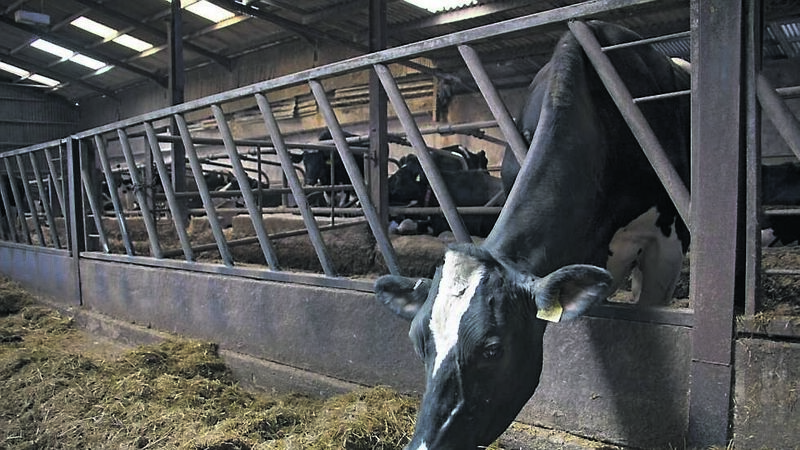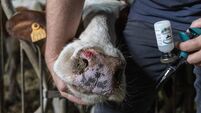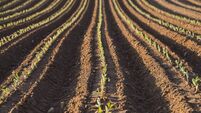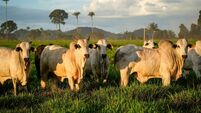Herd Advice: Mind your minerals pre-lactation

Preparing cows for the next lactation is a key period in their production cycle.
Last week, I touched on mineral supplementation for the pre-calving cow.
A quality dry cow mineral is a very important element of a successful dry cow nutrition in preparation for the next lactation. Look at the quality of the mineral, rather than buying it on price alone.
This applies to both suckler and dairy production systems.
If you have gone to the trouble of getting a mineral analysis for your silage, then get help to match the correct mineral so that any deficits in your silages are filled. Dry cow minerals should always have a high magnesium level and organic/protected trace elements to optimize mineral availability.
It is also important that sufficient vitamin E is fed to promote the cow’s immune response around calving. Phosphorous also needs to be supplied in sufficient volume to ensure good saliva production for thorough digestion and rumen buffering.
Many suckler herds now use a bolus in the Dry period as their means of mineral supplementation and this has proved to work very well on many farms. However, I would certainly not favour this as the sole method of mineral supplementation in a dairy herd.
By all means, use a bolus as an addition if you have identified a copper, selenium, iodine or cobalt deficiency on your farm. In both suckler and dairy herds additional mineral supplementation beyond a Bolus would be a good idea this dry period.
A common trend in forage mineral results returning for 2021 silages is that silages are high in one or more of Lead, Aluminium and Iron which are antagonists. These will inhibit the availability of elements such as Copper, Manganese, Zinc and Selenium.
Mineral specs should be formulated based on historic knowledge and current forage analysis and if there have been historic issues then formulate based on requirements and not price. Keep an eye on feed rates per cow per day and what that rate supplies each day when you are buying your supply of minerals.
Where you are undecided which spec to buy, then you must calculate the amount of each mineral and vitamin being supplied at the rate on the bag. Then it is worth looking at the source of elements such as selenium, copper, zinc and manganese as outlined above.
Organic sources such as bioplex and selplex are more available to the animal.
It is worth remembering that in both dairy and suckler herds, the dry period should be used to prepare the cow for a successful lactation. Physical and metabolic preparation will help to make for an easier transition to lactation with the ultimate aim of producing quality milk and getting cows back in calf.
I would certainly favour keeping one group of dry cows, as in most set-ups it is not practical to be constantly moving cows from batch to batch and may prove more stressful than it is worth for man and beast.
In a one-batch system, it is best to feed pre-calver minerals for at least five weeks before the first cow is due to calve.
The cow’s nutrient requirements in the last two weeks of the dry period are increasing due to colostrum production and the increasing size of the rapidly growing calf. The cow’s appetite is also declining due to hormonal changes.
In general, aim to spec dry cow diets at 9.5 to 10 ME and 13.5 to 14% for all dry cows for the entire dry period as separate diets can complicate things and are generally unnecessary. The additional protein helps promote feed intake, as well as increasing colostrum yield and helping bagging down.
In-calf heifers will benefit as they are the ones that are most likely to suffer from poorer intakes as they approach their calving date. Dairy blends/nuts should not be fed to cows before calving as they contain calcium.
In some cases, a special diet may be necessary for the last three weeks dry if historical issues have been recorded or the silage has particular mineral characteristics requiring attention. When reading a silage analysis mineral result, there are some elements that you must pay particular attention to.
Potassium (K) over 1.8% can be a contributory factor to held cleanings and milk fevers and must be diluted down physically with forage low in K such as straw and also chemically with the addition of extra Magnesium to the pre-calving diet.
If a high K is coupled with a high Sodium (Na) then the issues with metabolic disorders can be magnified further. This is a particular problem in coastal areas where silage is made for dry cows.
If you are feeding ingredients such as beet, maize or whole crop then watch that you are supplying sufficient Phosphorous. It is a high-value ingredient, but make sure you are getting enough into cows pre- and post-calving.
Some minerals are essential to optimise nutrient digestion and thorough absorption. Given that we are aiming to optimise intakes post-calving, we must do everything to extract and utilise as much of the nutrients from feed intake as possible.










